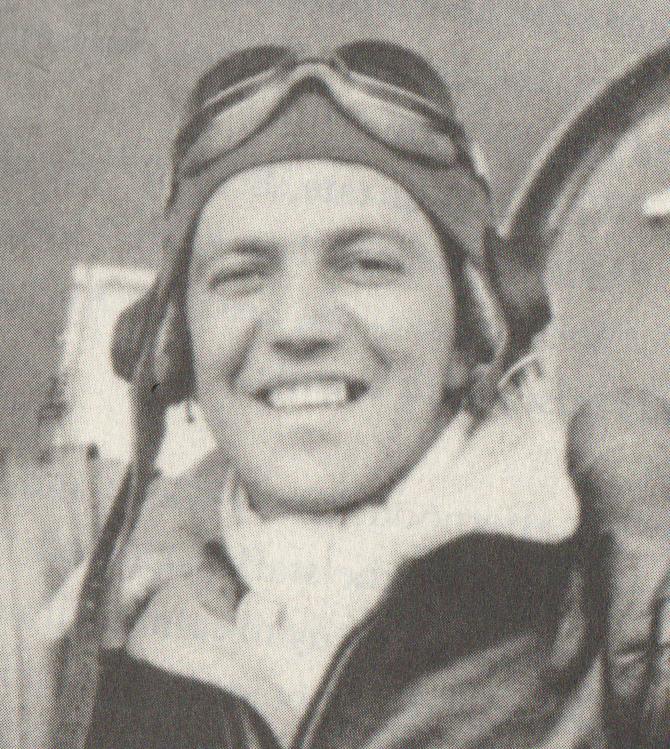GAIDO-BRUNO
BRUNO PETER GAIDO

AMM1

A WAR CRIME VICTIM
On February 1, 1942, in the Central Pacific near the Marshall Islands, five Japanese bombers attacked the USS Enterprise. After dropping their bombs four of the bombers sped away but the last bomber, damaged by guns of the CAP, suddenly dropped out of formation and sweeping around in a full circle commenced an obvious attempt to crash into the carrier. Every gun that would bear concentrated on the single attacker and although it was hit repeated the plane maneuvered desperately toward the ship with its guns firing. Bruno Peter Gaido, then Aviation Machinist Mate Second Class, from his catwalk battle station, saw the enemy pilot attempting to crash into his ship. Bruno was seen to dart across the open deck and scramble into the rear seat of the sternmost Douglas SBD Dauntless dive bomber. Then, from the parked dive bomber, Gaido manned the .30 caliber machine guns in the rear seat and relentlessly poured tracers toward the oncoming plane. Witnesses said it seemed as though the action had become a personal duel between the Japanese pilot and Gaido as they each continuously fired toward each other. In its final right turn the enemy pilot tried for a deck crash and his right wing tip sliced through Gaido’s SBD, shearing its tail off three feet from where Gaido furiously kept up his fire. The right wing separated from the fuselage and skidded into the port catwalk, the fuel from its ruptured tanks drenching the ship forward to the island and up into the superstructure. The broken Dauntless was knocked to the extreme aft edge of the flight deck. In its rear seat Gaido stood to depress his guns, firing into the wreckage of the Japanese bomber as it settled into the sea astern. The entire action was witnessed from the bridge by the Admiral in command, who upon learning Gaido’s identity, immediately ordered that he be promoted. That afternoon Gaido became an Aviation Machinist Mate First Class.
The Battle of Midway is considered by many to be the most important naval battle of the Pacific Campaign during World War II. The battle began the morning of June 4, 1942, and AMM1 Gaido was the radio-gunner in a SBD from Scouting Squadron Six (VS-6) piloted by Ensign Frank W. O’Flaherty which flew from the Enterprise to attack the Japanese fleet. The SDB dive bombers were instrumental in the attacks which destroyed the Japanese carriers Akagi and Kaga. Following their successful attack six SBDs formed an arc formation as they sped away from the Japanese fleet. However, as they departed the formation was repeated attacked by Japanese Zero fighters. Skillful management of the formation kept the Zeros from inflicting serious damage to five of the American planes. Unfortunately, the SBD of O’Flaherty and Guido received significant damage to its fuel tanks and soon the tanks ran dry forcing it to ditch in the sea. As the remainder of the formation was forced to leave the area because of continued attacks by the Zeros, O’Flaherty and Guido were last seen scrambling aboard their life raft.
The countless atrocities committed by the Japanese Imperial Army during World War II are reasonably well known. What is less well known is the dark war record of the Imperial Japanese Navy. Following the close of World War II when the U.S. Navy gained access to the Japanese Battle of Midway Action Report it was revealed that Ensign O’Flaherty and AMM1 Gaido had been plucked from the sea by the Japanese destroyer Makigumo. The circumstances of their deaths were investigated as a war crime. The investigation confirmed that after their capture they were intensely interrogated and when they were considered of no further value, on June 15, 1942, they were bound with ropes, tied to weighted fuel cans and thrown overboard to drown. This war crime was never prosecuted as most of the Japanese involved in their deaths perished later in the war and so building a case was impossible.
In 1996 an Enlisted Combat Aircrew Roll of Honor was established aboard the USS Yorktown Museum in Charleston, South Carolina. AMM1 Gaido was honored as the first inductee.
Submitted by CDR Roy A. Mosteller, USNR (Ret)

